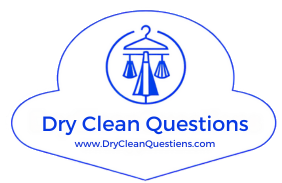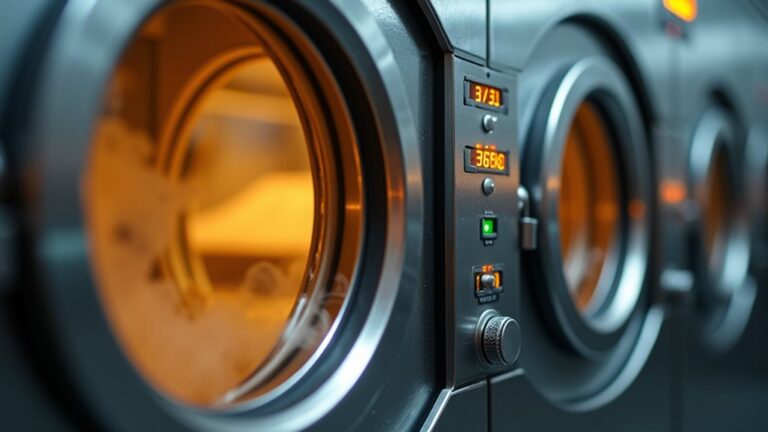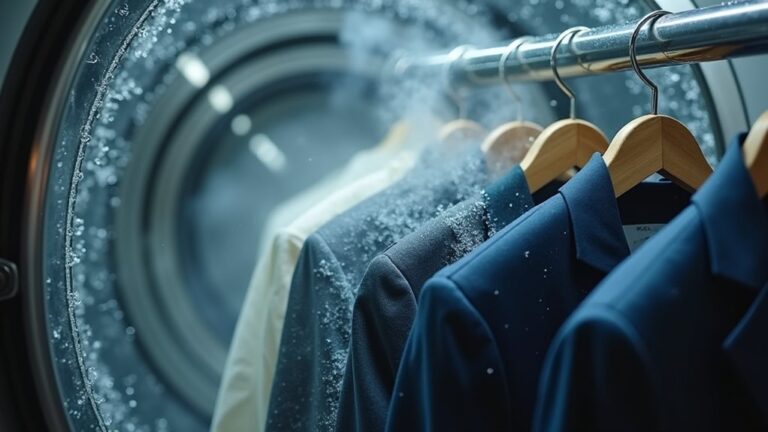Dry cleaning works like a gentle rescue mission for your most precious garments, using specialized chemical solvents instead of water to lift away dirt, oils, and stubborn stains from delicate fabrics like silk, wool, and cashmere that would shrink or get damaged in your regular washing machine. Through a careful five-step process involving inspection, pre-spotting, solvent cleaning, post-spotting, and professional finishing, your clothes emerge looking polished and refreshed, and there’s so much more to discover about this fascinating process.
How Dry Cleaning Works
When I first dropped off my favorite silk blouse at the dry cleaner’s, I honestly thought they were performing some kind of magic trick—how could something get “cleaned” without water?
Turns out, the dry cleaning process relies on specialized cleaning solvents, primarily perchloroethylene, that lift dirt and oil without damaging delicate fabrics like my precious silk.
Your garments get gently tumbled in a cleaning machine during a typical dry cleaning cycle lasting 8-15 minutes, where these environmentally friendly solvents work their magic to remove stains that water simply can’t handle.
After the cleaning cycle, your clothes undergo solvent extraction and drying before being pressed and steamed to restore their original appearance.
The beauty lies in how these cleaning solvents preserve your fabric’s shape and texture while achieving what I once thought impossible—spotless clothes without a drop of H2O!
The Five-Step Dry Cleaning Process
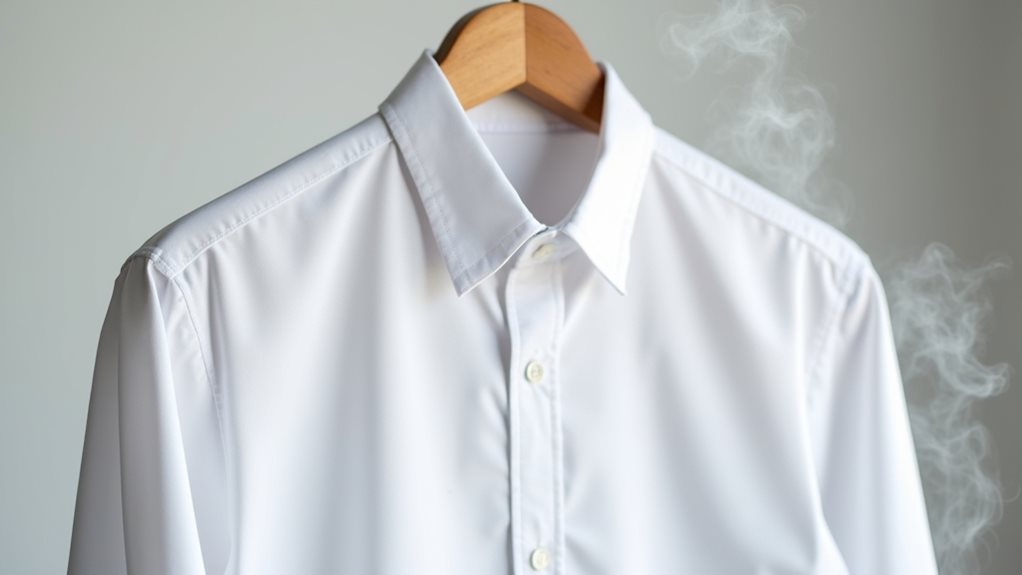
Five distinct steps transform your wrinkled, stained garments into the crisp, fresh clothes you’ll proudly wear again, and honestly, watching this methodical process unfold during my behind-the-scenes dry cleaner tour made me appreciate the genuine craftsmanship involved.
First, Inspection and Tagging identifies damage and stains requiring special attention.
Trained professionals examine each garment meticulously, cataloging every stain, tear, and fabric weakness before beginning the restoration process.
Next, Pre-Spotting applies targeted chemical solvents or heat to stubborn marks, preparing them for removal.
The actual Dry Cleaning step immerses your clothes in non-water solvents within a specialized machine that gently agitates fabric without causing damage. The cleaning solution is then distilled and recycled through a recovery process that allows the solvent to be reused for future cleaning cycles.
Post-Spotting guarantees every last stain disappears through final inspection and additional treatments.
Finally, Finishing involves pressing, steaming, and ironing to create that polished appearance that makes you look effortlessly put-together 💫.
Benefits of Professional Dry Cleaning
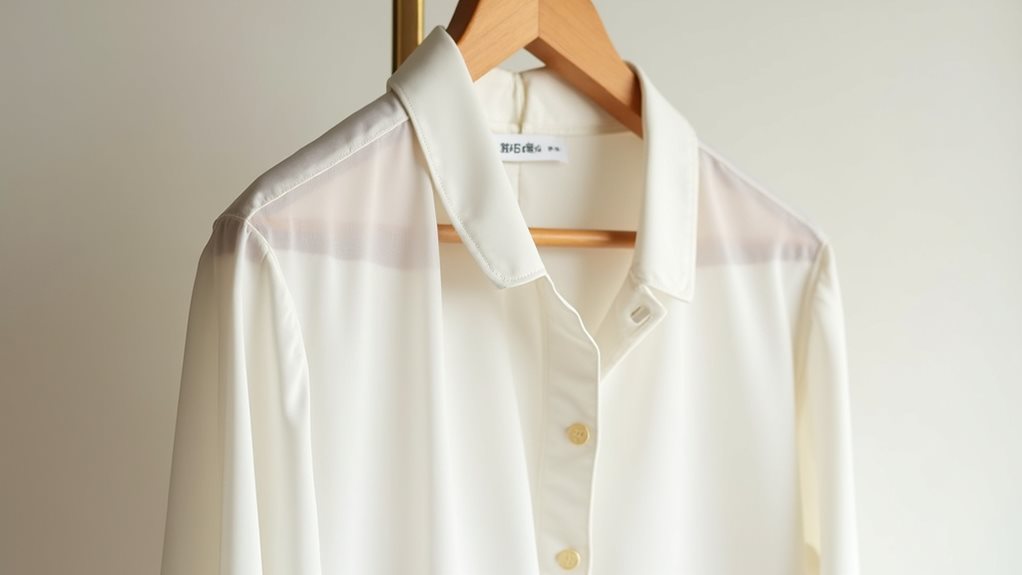
You’ll discover that professional dry cleaning offers three game-changing advantages that make it worth every penny, especially when you’re dealing with those precious garments you can’t afford to mess up.
The fabric protection keeps your favorite wool sweater from turning into something your toddler could wear, while expert stain removal tackles those “oops” moments that would otherwise haunt your closet forever.
Most importantly, the professional finishing quality transforms your clothes from “eh, good enough” to “wow, you look amazing,” giving you that confidence boost that’s honestly priceless when you’re walking into important meetings or special occasions.
Unlike traditional washing methods, dry cleaning uses chemical solvents instead of water, making it the ideal choice for delicate materials like silk and cashmere that would otherwise suffer from shrinkage or color bleeding.
Fabric Protection and Preservation
Since discovering the transformative power of professional dry cleaning about five years ago, I’ve watched my favorite cashmere sweater maintain its luxurious softness while my neighbor’s identical one, subjected to countless home washing attempts, now resembles something closer to felt than fabric.
The secret lies in fabric protection that high-quality dry cleaning provides through specialized chemical solvents, which gently lift oil-based stains without compromising delicate fabrics’ structure.
Unlike water-based washing that causes materials to shrink and lose their garment integrity, professional preservation methods maintain your clothing’s original shape and prevent devastating color fading.
This careful approach extends longevity considerably, transforming expensive pieces from temporary indulgences into lasting investments that’ll serve your wardrobe beautifully for years.
Formal wear and garments with intricate embellishments particularly benefit from this process, as conventional washing machines would destroy these delicate details that define their elegance and value.
Expert Stain Removal
While most of us have mastered the art of creating spectacular stains—from that inevitable coffee spill during Monday morning meetings to the mysterious grease mark that appears after every pizza night—removing them completely requires the kind of expertise that only professional dry cleaning possesses.
Here’s what makes expert stain removal so effective:
- Chemical solvents tackle oil-based stains that water simply can’t touch
- Pre-spotting process targets specific problem areas before the main cleaning cycle
- Multiple inspection phases catch any stubborn remnants for additional treatment
- Advanced equipment recovers 99.99% of solvents, making the process environmentally responsible
Professional dry cleaners understand stain removal techniques that protect delicate fabrics while eliminating even the most challenging marks, something your home washing machine simply can’t replicate. This specialized approach is particularly crucial for delicate fabrics like silk, wool, and cashmere that would be damaged by traditional water-based washing methods.
Professional Finishing Quality
After your garments complete their chemical bath and stain removal process, they enter what I consider the most transformative phase of dry cleaning—the professional finishing process that turns your wrinkled, lifeless clothes into crisp, boardroom-ready pieces that actually look like they belong in your closet rather than a donation pile.
Through professional finishing, your garments get pressed, steamed, and carefully inspected for any lingering stains that might’ve survived the initial treatment. The specialized equipment these pros use creates that polished appearance you simply can’t achieve with your home iron (trust me, I’ve tried 😅).
This meticulous fabric care maintains your clothes’ original shape while many cleaners now offer eco-friendly options that deliver exceptional results without harming the environment. Unlike traditional washing methods that use water, dry cleaning employs chemical solvents to effectively remove oil-based stains and preserve the integrity of delicate materials like silk and wool.
Which Fabrics Require Dry Cleaning
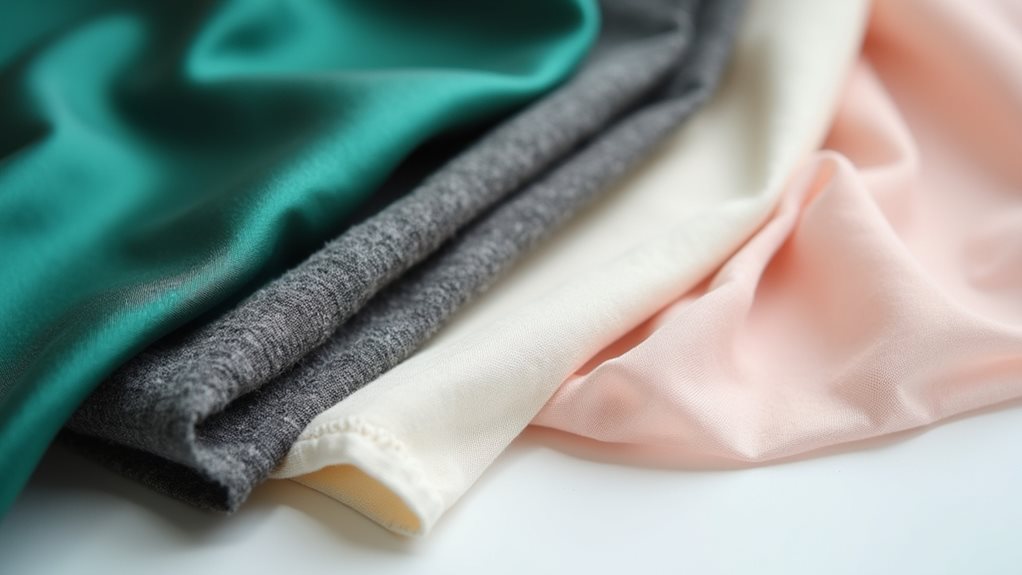
Why do some fabrics seem to shrink into doll clothes the moment they touch water, while others emerge from your washing machine looking like they’ve been through a blender? The answer lies in understanding which delicate garments require professional dry cleaning instead of your regular washing routine.
Your care label becomes your best friend when determining if fabrics need special attention. Sensitive materials can’t handle water’s harsh effects, making the dry cleaning process crucial for preservation.
Care labels whisper the secrets your delicate fabrics desperately want you to know before disaster strikes.
Here’s what typically needs professional care:
- Luxurious natural fibers – silk blouses that shimmer like moonlight, cashmere sweaters softer than clouds
- Embellished garments – sequined dresses sparkling like starlight, beaded tops heavy with intricate details
- Synthetic surprises – rayon pieces that dissolve faster than sugar cubes
- Investment pieces – customized suits structured like architectural masterpieces
When you’re unsure about stain removal or fabric sensitivity, trust experienced dry cleaners who’ve seen every clothing catastrophe imaginable. Dry cleaning uses chemical solvents instead of water to safely remove dirt and stains while preserving the fabric’s integrity and appearance.
Environmental Impact and Safer Alternatives
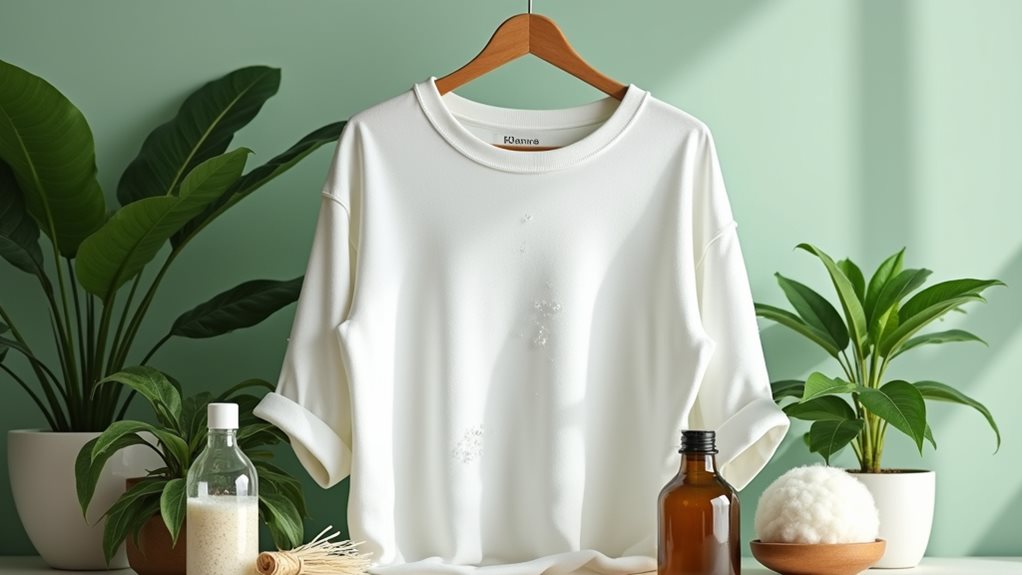
Beyond choosing the right fabrics for professional cleaning, there’s something that’s been quietly weighing on my mind lately – the hidden environmental cost of keeping our favorite garments pristine.
Traditional dry cleaning relies heavily on perchloroethylene, a carcinogen that creates serious health hazards and groundwater contamination, while contributing to air pollution that affects entire communities.
Fortunately, the dry cleaning industry is embracing eco-friendly practices that’ll make you feel better about professional garment care.
You’ve got alternative solvents like supercritical CO2, which sounds fancy but basically means using pressurized carbon dioxide instead of toxic chemicals.
Wet cleaning offers another sustainable option, using specialized water-based processes that’re surprisingly effective on delicate fabrics.
Even when using traditional methods, you can minimize exposure risks by allowing your freshly cleaned garments to air out before wearing them to reduce chemical residue.
These sustainable options prove you don’t have to choose between pristine clothes and protecting our planet.
Maximizing Your Dry Cleaning Results

You know, I learned the hard way that getting amazing dry cleaning results isn’t just about dropping off your clothes and hoping for the best—it’s about becoming your cleaner’s partner in the process.
The secret sauce starts with understanding what those tiny care labels are actually telling you, because I once ruined a beautiful silk blouse by ignoring that little tag (rookie mistake that still makes me cringe 😅).
When you walk into your dry cleaner armed with knowledge about specific stains and proper garment care requirements, you’re setting yourself up for results that’ll make you feel like you’ve got a personal wardrobe magician working behind the scenes.
The dry cleaning process uses chemical solvents instead of water to effectively remove dirt and stains while preserving the integrity of delicate fabrics that would be damaged by traditional washing methods.
Pre-Treatment Communication Tips
How often have we dropped off our favorite silk blouse or wool suit at the dry cleaner, only to mumble something vague about “a little stain somewhere” and hope for the best?
This approach, while tempting, wastes the expertise your dry cleaner brings to pre-treatment solutions.
Effective communication transforms cleaning results:
- Point out specific stains like that wine splash on your sleeve or oil drip near the pocket
- Describe the stain’s source – was it red wine, motor oil, or ballpoint ink?
- Share garment care labels and any special cleaning instructions you’ve noticed
- Mention previous mishaps so they can adjust their approach accordingly
Professional dry cleaners excel at removing oil-based stains that water simply cannot dissolve, making your detailed communication about grease or makeup spots particularly valuable.
Garment Care Label Guidelines
While we’ve all been guilty of tossing clothes into the dry cleaning bag without a second thought, those tiny care labels sewn into your garments actually hold the roadmap to preserving your wardrobe’s lifespan and appearance.
Think of care labels as your garment’s personal instruction manual – they’ll tell you whether dry cleaning is necessary or if regular washing machines will suffice.
When you spot “dry clean only” tags, especially on delicate fabrics like silk or wool, resist the urge to experiment with home cleaning methods that could damage expensive pieces.
Pay attention to specific symbols too: “P” means perchloroethylene solvents are safe, while “W” indicates wet cleaning works best.
These guidelines help your cleaner choose appropriate pre-treatment for stubborn stains.
